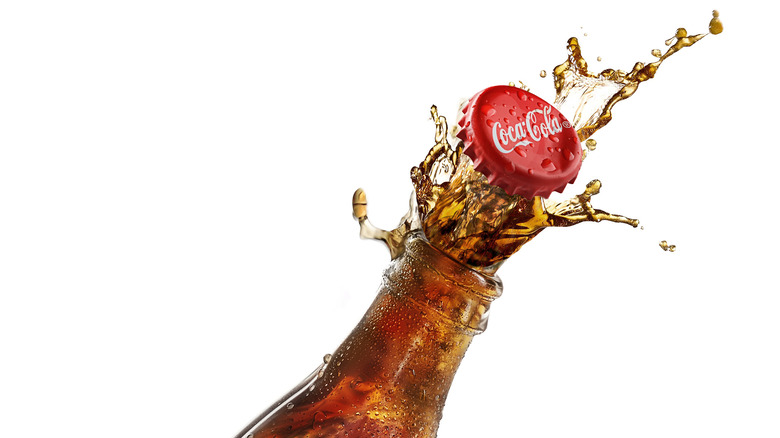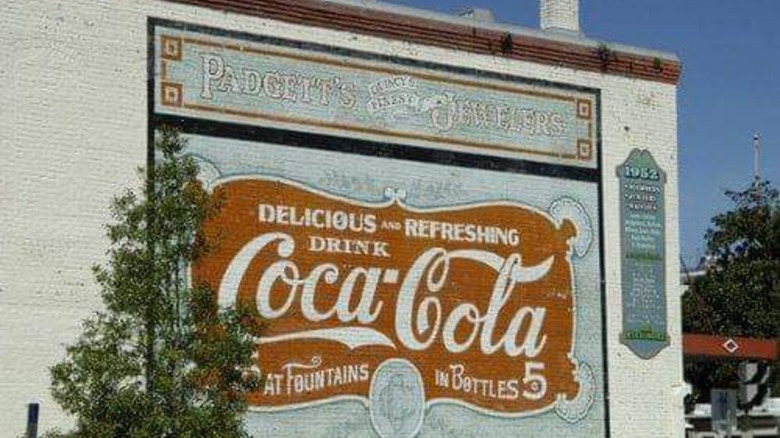How Coca-Cola Made This Town Ridiculously Wealthy During The Great Depression
The 1930s were a dark period in American history. The Great Depression had replaced the captivating drama of booze-running gangsters and stock market-gambling playboys of the Roaring '20s with a stark and bitter reality of economic ruin and foreclosed mansions. As teenage boys and hobos rode the rails across America's heartland in search of work, and as breadlines stretched around city blocks, there are still some stories to tell that reflect the hope and optimism ingrained in the hearts of American people even in the time of layoffs and recession.
The pop culture of the time, such as Frank Capra's movies of honest integrity and Shirley Temple singing her way through misadventures, provided some relief to the morale-drained Americans, with 60 to 80 million attending the movies each week even at the height of the Depression (via Digital History). Many Americans found themselves with a greater amount of compassion for another, treating weary strangers like old friends, and focusing more on family rather than political or economic gains, according to CNN. One such story of hope involves a little town in Florida that, even in the darkness and poverty of the Great Depression, managed to become the single richest town per capita in the United States.
In a twist of fate that seems almost unbelievable to be true, the small town of Quincy in the Sunshine State managed to transform itself into a town of high-rollers and wealthy farmers, thanks to a respected town banker, and the nation's love of an ice-cold Coca-Cola.
A banker convinced the town to buy up Coca-Cola stock, and it paid off
A banker in a small Florida town convinces as many people as he can to invest their money in a certain business, promising huge dividends and payouts that will bring fortune to their Depression-haunted town. Was it an investment scheme? Fortunately not. The banker, a man by the name of Mark Welch Munroe (but affectionately called "Mr. Pat") observed that people were still buying Coca-Cola even with what little money they had, per Chonday. His suggestion to the little town of Quincy, Florida was this: Buy as much Coca-Cola stock as you can, and don't sell it. As shares were somewhat affordable to buy, dropping to $19 at one point, says the article — and Pat was a trusted banker — the people listened to his advice, and struck fizzy black gold.
According to Atlas Obscura, the popularity of Coke allowed their shares to skyrocket, transforming the sleepy little farm town into an overnight boom town. So great was this windfall that 67 "Coca-Cola millionaires" were minted, and the town was able to stay afloat — long after the Great Depression. The Motley Fool describes how one stock of Coke was $40 dollars in 1919 (though it dropped to $19 after the crash), and after all the dividends and splits, would have turned into 9,200 shares, which in modern-terms, would now be $10 million dollars today. The "Coke millionaires," Motley Fool continues, either quietly passed their money down through generations or generously reinvested back into their town, funding churches and Girl Scout camps. While Quincy is still a little town today, there's still signs of the Coca-Cola craze hidden on every corner, especially on a large Coke mural that proudly decorates the downtown district.

